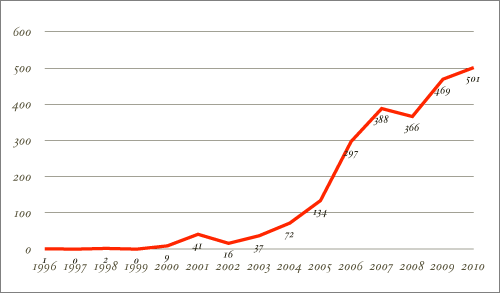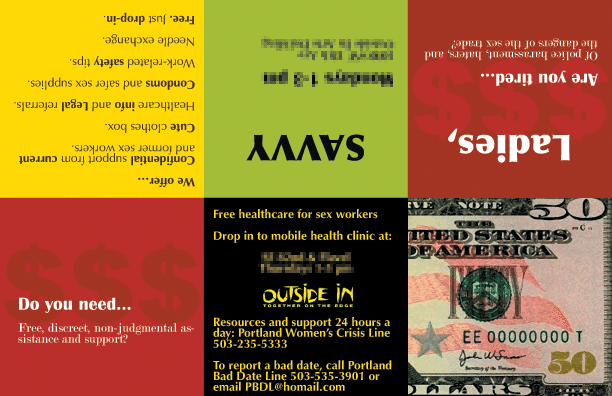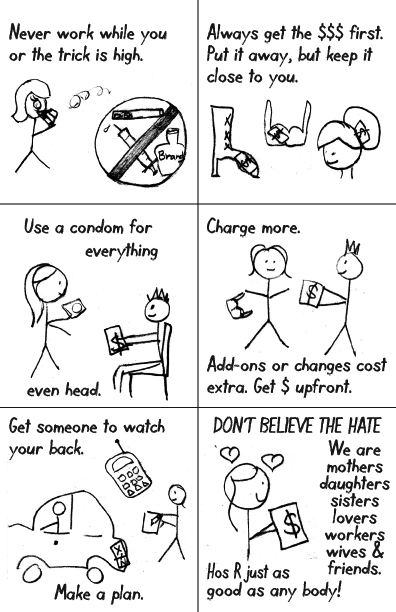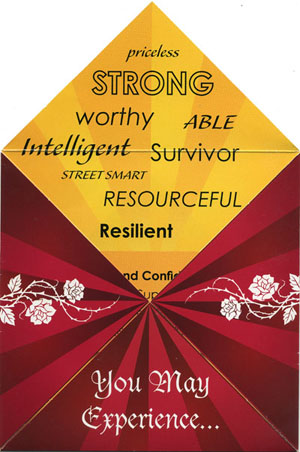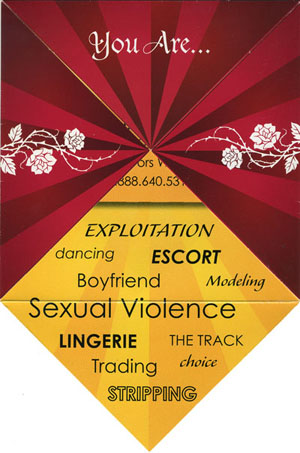Leslie Bennetts who apparently drunk the prostitution-is-violence-against-women cool-aid wrote an article in Newsweek (07/18/2011) titled “The John Next Door,” which is based on anti-prostitution “researcher” Melissa Farley’s new “research” on men who purchases sexual services.
The “study” was made “exclusive to Newsweek,” so we can’t actually read the report itself. So my comments are preliminary but here are some quick (and not so quick) thoughts:
1) The report is made “exclusive to Newsweek,” so we don’t know what methodology they used beyond what is included in the story (which is very little). Melissa Farley, the author of the report, has produced multiple previous “researches” on johns in different countries and regions, none of which (as far as I know) has been published in a peer-reviewed journal. The article does not refer to any other studies on the johns that have been published in peer-reviewed journals. (Edited to add: Apparently one of Farley’s articles have been accepted by a peer-reviewed journal. See comments for detail.)
2) In her previous “researches,” Farley recruited study participants (men who have purchased sexual services) via newspaper ads that read “Ever been a client of a prostitute? International research team would like to hear your views”, offering financial compensation. I don’t know how they recruited the participants this time around, but whether subjects who have been recruited this way are representative of all men who purchase sex is highly questionable. The new report seems to be different from the previous studies in that it includes the control group, but we do not know how the control was recruited either.
3) Much of the article consists of anecdotal statements that are supposedly illustrative of general tendencies among men who purchase sex and those who don’t, but there are no quantitative comparison between them. It is impossible to tell if the statements are actually representative of each group.
4) There are many unfounded editorializing and logical leaps. For example, one paragraph reads: “Many johns view their payment as giving them unfettered permission to degrade and assault women. ‘You get to treat a ho like a ho,’ one john said. ‘You can find a ho for any type of need–slapping, choking, aggressive sex beyond what your girlfriend will do.'” But the john’s statement (i.e. you can find a sex worker who would agree to participate in the enactment of violent fantasies like those described) does not indicate that he views his payment as giving him “unfettered permission to degrade and assault women.”
5) The story states “Farley’s findings suggest that the use of prostitution and pornography may cause men to become more aggressive.” She has made similar claims in her previous “researches” which have not been (and will probably not be) published in peer-reviewed journals, but has not provided the evidence that one causes another.
6) The story states that prostitutes “typically enter ‘the life’ between the ages of 12 and 14,” which is based on a demonstrably faulty interpretation of data. T.O.M.’s story is sad and infuriating, but its use as “a case in point” is questionable, as her experience (i.e. having been sold for the first time at age four) is very unusual.
7) The second half of the story slides the discussion on to sex trafficking rather than adult consensual commercial sex, as if they are the same thing. But it is the illegality of commercial sexual transaction itself that makes it more difficult to separate the two and confront the actual abuse and exploitation of children and women (and others).
8a) The article cites the 2004 study in American Journal of Epidemiology by Potterat et al. to indicate that “Prostitution has laways been risky for women; the average age of death is 34.” But this is misleading, because it does not mean that the average life expectancy for prostitutes is 34 or that the average prostitute dies at age 34. Potterat et al. are simply reporting that among the active prostitutes who died in the studied period, the average age at which they died was 34. If that is not clear, consider this analogy: average age at death for those who die while enrolling in college is probably somewhere near 20, but nobody would claim that the average college student dies at 20.
8b) The article also cites the same Potterat et al. study to say that “prostitutes suffer a ‘workplace homicide rate’ 51 times higher than that of the next most dangerous occupation, working in a liquor store.” But working in a liquor store is not “the next most dangerous occupation.” Potterat et al. state that taxicab drivers are much more likely to be murdered than liquor store clerks: the “workplace homicide rate” for prostitutes is seven times higher when compared to taxicab drivers. That is still pretty high, but why does Bennetts feel the need to exaggerate the already horrible figure?
8c) Further, “the overwhelming majority” of the “prostitutes” in this study were streetwalkers, and almost two-thirds were recruited at sexually transmitted infection clinic. Other participants were found at HIV testing sites or addiction treatment facilities, or identified by the police. Thus, the study systematically excludes prostitutes who are less visible to public health and law enforcement officers (e.g. escorts), who are likely to be much less prone to violence.
Anyway, it’s hard to say anything about the new Farley “study” until the actual report is made public and the research methodology is made transparent (and hopefully Farley would submit the paper for publication in peer-reviewed journal this time).
Also read: Melissa Farley in Scotland: Trivializing prostitution and trivializing violence against women by Elizabeth Wood

